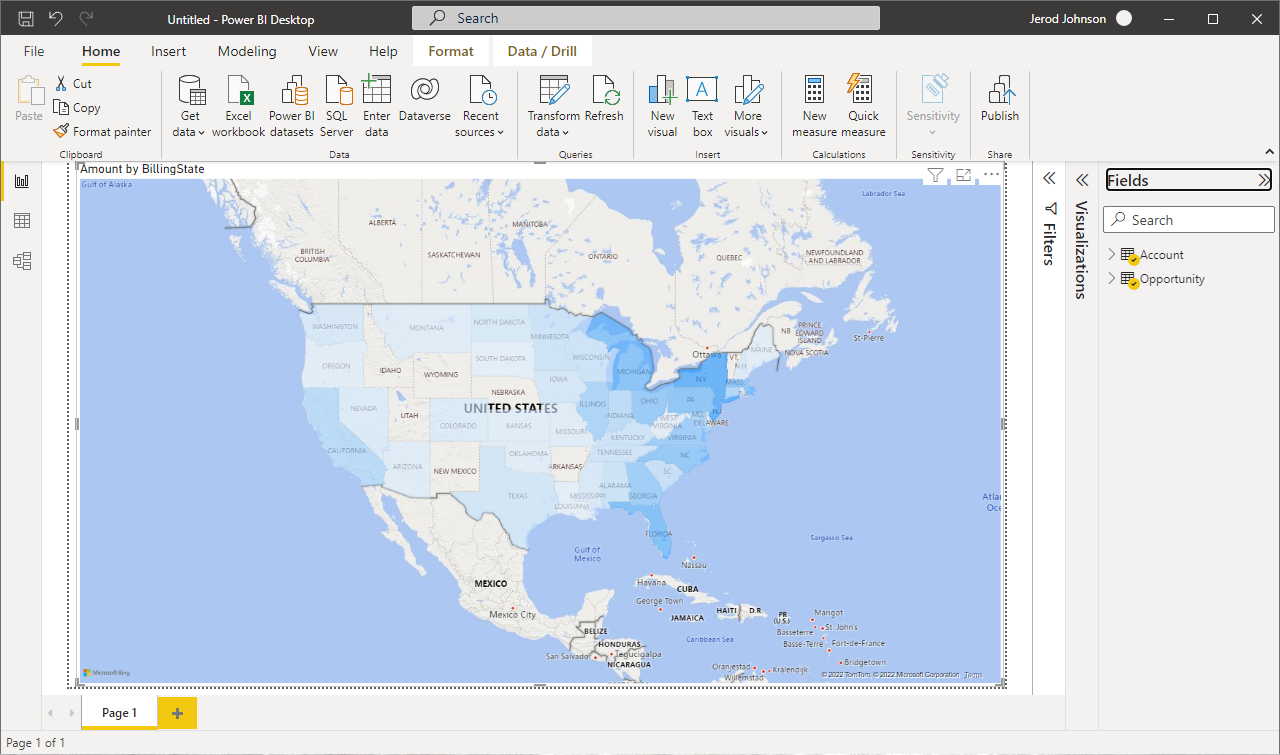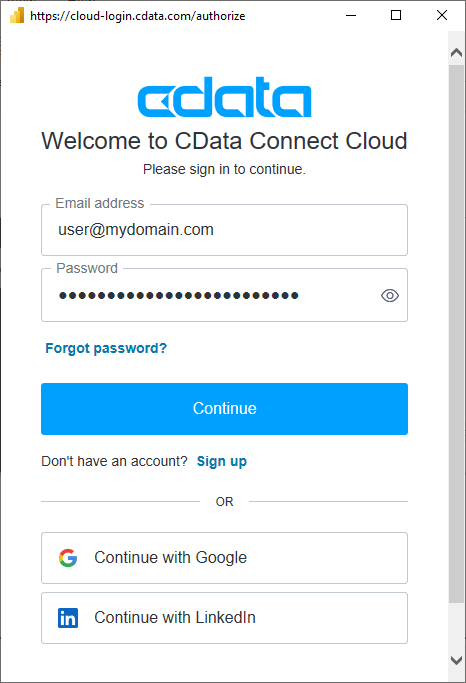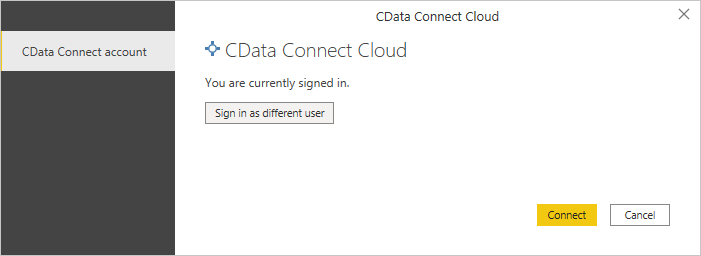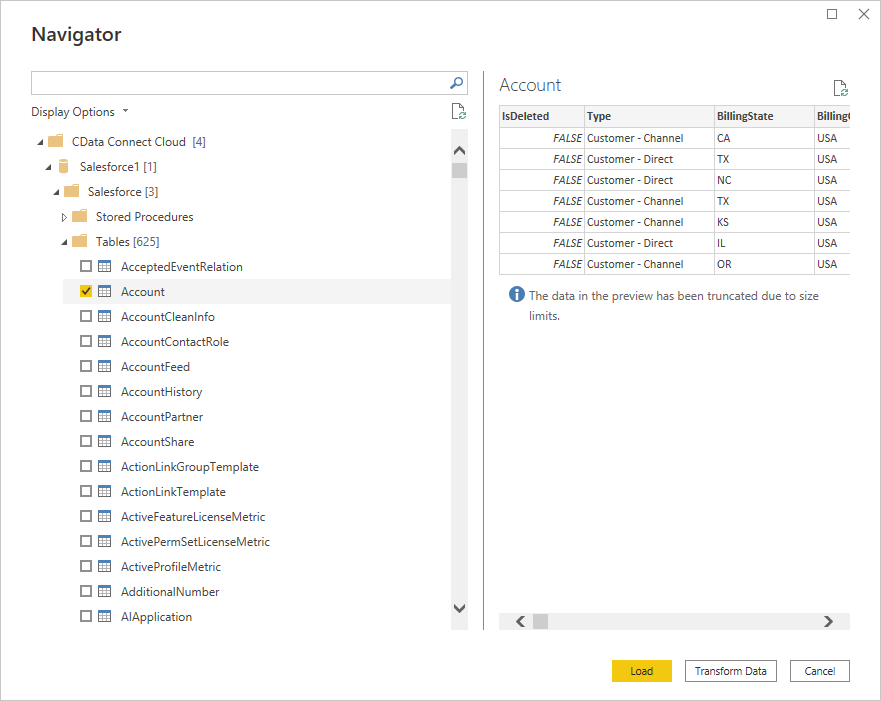Discover how a bimodal integration strategy can address the major data management challenges facing your organization today.
Get the Report →Visualize Live Adobe Commerce Data in Power BI (via CData Connect Cloud)
Use the CData Power BI Connector and CData Connect Cloud to integrate live Adobe Commerce data into custom reports in Power BI.
Power BI transforms your company's data into rich visuals for you to collect and organize so you can focus on what matters to you. When paired with CData Connect Cloud, you get access to Adobe Commerce data for visualizations, dashboards, and more. This article shows how to use CData Connect to create a live connection to Adobe Commerce, connect to Adobe Commerce data from Power BI and then create reports on Adobe Commerce data in Power BI.
Configure Adobe Commerce Connectivity for Power BI
Connectivity to Adobe Commerce from Power BI is made possible through CData Connect Cloud. To work with Adobe Commerce data from Power BI, we start by creating and configuring a Adobe Commerce connection.
- Log into Connect Cloud, click Connections and click Add Connection
![Adding a Connection]()
- Select "Adobe Commerce" from the Add Connection panel
![Selecting a data source]()
-
Enter the necessary authentication properties to connect to Adobe Commerce.
Adobe Commerce uses the OAuth 1 authentication standard. To connect to the Adobe Commerce REST API, you will need to obtain values for the OAuthClientId, OAuthClientSecret, and CallbackURL connection properties by registering an app with your Adobe Commerce system. See the "Getting Started" section in the help documentation for a guide to obtaining the OAuth values and connecting.
You will also need to provide the URL to your Adobe Commerce system. The URL depends on whether you are using the Adobe Commerce REST API as a customer or administrator.
Customer: To use Adobe Commerce as a customer, make sure you have created a customer account in the Adobe Commerce homepage. To do so, click Account -> Register. You can then set the URL connection property to the endpoint of your Adobe Commerce system.
Administrator: To access Adobe Commerce as an administrator, set CustomAdminPath instead. This value can be obtained in the Advanced settings in the Admin menu, which can be accessed by selecting System -> Configuration -> Advanced -> Admin -> Admin Base URL.
If the Use Custom Admin Path setting on this page is set to YES, the value is inside the Custom Admin Path text box; otherwise, set the CustomAdminPath connection property to the default value, which is "admin".
![Configuring a connection (Salesforce is shown)]()
- Click Create & Test
- Navigate to the Permissions tab in the Add Adobe Commerce Connection page and update the User-based permissions.
![Updating permissions]()
With the connection configured, you are ready to connect to Adobe Commerce data from Power BI.
Query Adobe Commerce Tables
Follow the steps below to build a query to pull Adobe Commerce data into the report:
- Open Power BI Desktop and click Get Data -> Online Services -> CData Connect Cloud and click "Connect"
- Click "Sign in" and authenticate with your CData Connect Cloud account
![Authenticating with Connect Cloud]()
- After signing in, click "Connect"
![Connecting to Connect Cloud]()
- Select tables in the Navigator dialog
![The available tables. (Salesforce tables are shown)]()
- Click Load to establish the connection to your Adobe Commerce data from Power BI
Create Adobe Commerce Data Visualizations
After connecting to the data into Power BI, you can create data visualizations in the Report view by dragging fields from the Fields pane onto the canvas. Select the dimensions and measures you wish to visualize along with the chart type.

Click Refresh to synchronize your report with any changes to the data.
Live Access to Adobe Commerce Data from Data Applications
With CData Connect Cloud you have a direct connection to Adobe Commerce data from Power BI. You can import more data, create new visualizations, build reports, and more — all without replicating Adobe Commerce data.
To get SQL data access to 100+ SaaS, Big Data, and NoSQL sources (including Adobe Commerce) directly from your on-premise BI, reporting, ETL and other data applications, visit the CData Connect page and start a free trial.













